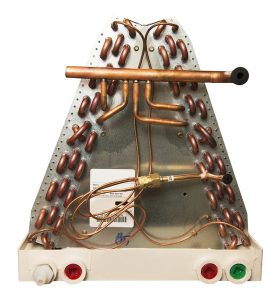 You don’t need to be an expert on the science and mechanics of air conditioning to enjoy cooling from an air conditioner, the same way you don’t have to be an electrical engineer to benefit from the lights in your house. Trained professionals exist to help you in these areas.
You don’t need to be an expert on the science and mechanics of air conditioning to enjoy cooling from an air conditioner, the same way you don’t have to be an electrical engineer to benefit from the lights in your house. Trained professionals exist to help you in these areas.
But extra knowledge of home services is always advantageous. When you understand the basics of the operation of your household cooling system, you’ll have a better idea when you need air conditioning service in Dunedin, FL.
Preamble over. Let’s examine the component at the heart of your air conditioning system: the compressor.
The Compressor Makes It All Happen
When we refer to the compressor as the heart of an air conditioner, we’re being a bit more than figurative. The compressor performs a similar function to a heart in a body: it allows for the circulation of a vital fluid.
An air conditioning system cools a space by pumping heat from the air in that space and releasing it outside. The process that moves heat is called heat transfer. The air conditioner does this using refrigerant, a chemical blend capable of changing easily between liquid and gaseous states. When cold refrigerant evaporates in the indoor coil, it absorbs heat. When hot refrigerant condenses in the outdoor coil, it releases heat.
In order for the refrigerant to 1) have the necessary energy to heat up and cool down and 2) change pressure so it moves between the sets of coils, it needs the compressor. This device, housed in the outside condenser cabinet, is where the energy coming from the electrical system into the AC is applied to the refrigerant so it moves through the coils and changes temperature.
When refrigerant enter the compressor, it’s a warm liquid. A suction line draws the refrigerant into piston chambers in the compressor. The motion of the pistons compresses the volume available for the refrigerant. This causes the compressor to rise in pressure and temperature until it becomes a hot gas. The pressure moves the hot gas out of the compressor where it heads toward the outdoor coil to begin the process of heat exchange.
The refrigerant is much hotter than the outdoor air (even on the hottest summer day) so it condenses and releases heat outside. The cooled refrigerant moves toward the indoors, going through an expansion valve that drops its temperatures and turns it into a cold liquid. This cold refrigerant moves through the indoor coils where it evaporates and draws heat from the air. A warm liquid again, the refrigerant moves toward the compressor to restart the heat exchange cycle.
The End of the Compressor
When an AC’s compressor dies, it’s usually the end of the line for the whole cooling system. Replacing a compressor is expensive; putting in a new AC system is often the more cost-effective option. When you run into cooling troubles with your air conditioner, call our technicians right away so they can head off a compressor failure if that’s the problem. They can also help with a replacement when the compressor burns out.
The A/C Guy of Tampa Bay Inc. serves our Tampa Bay Family with integrity and honor. Schedule any AC repairs with us.

